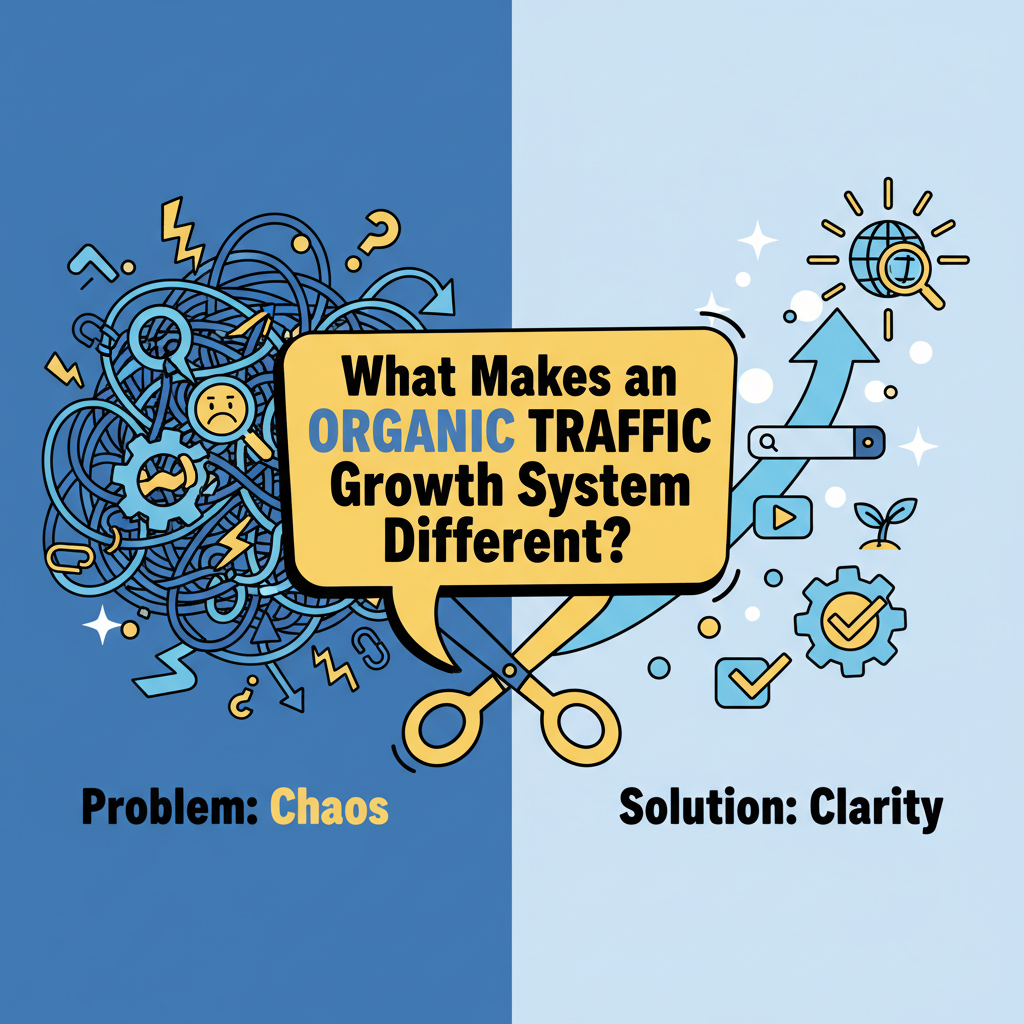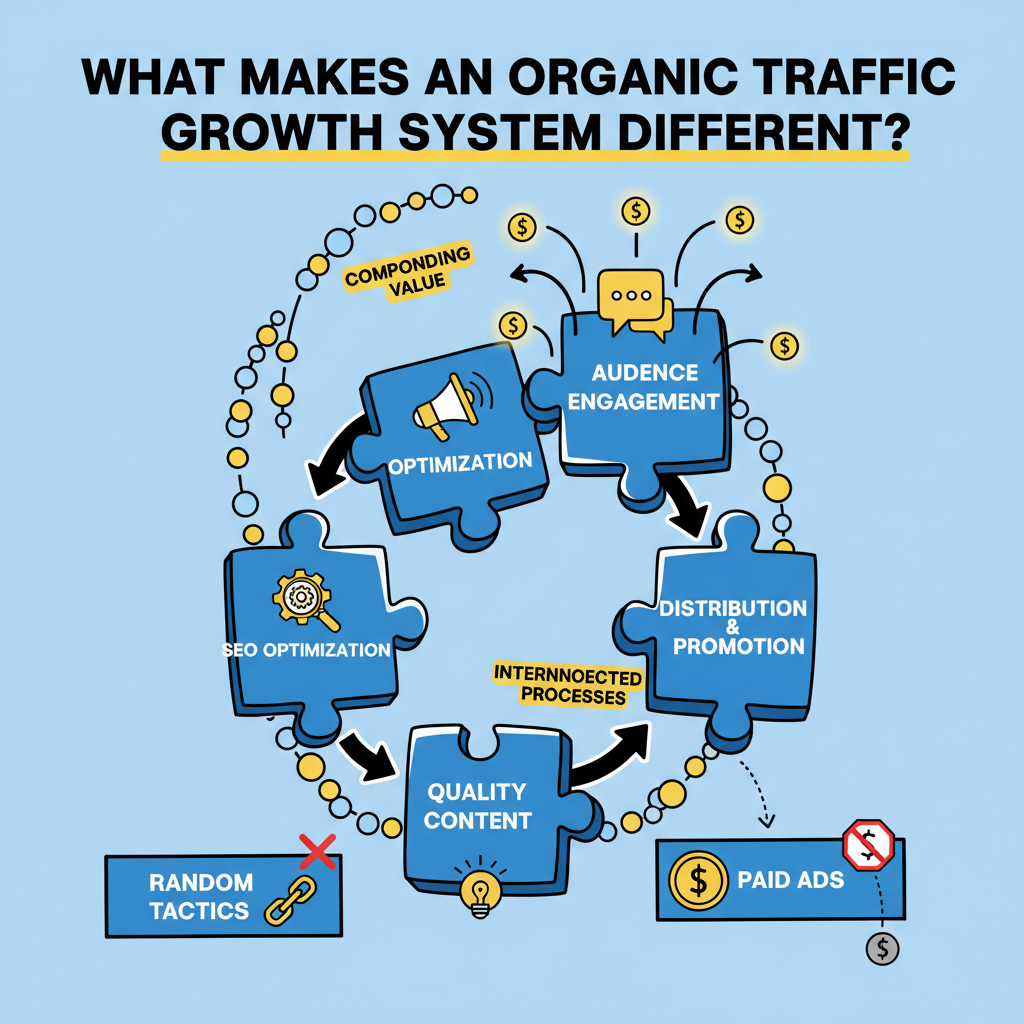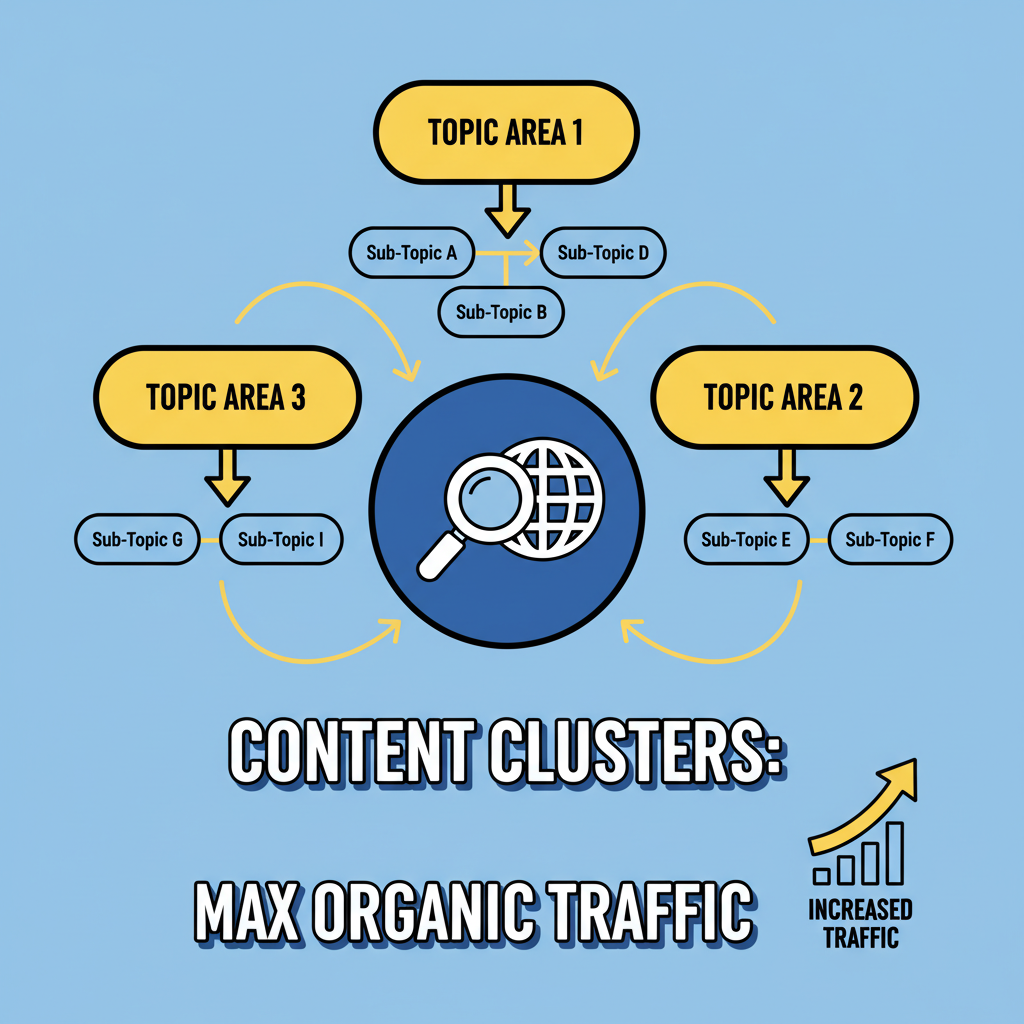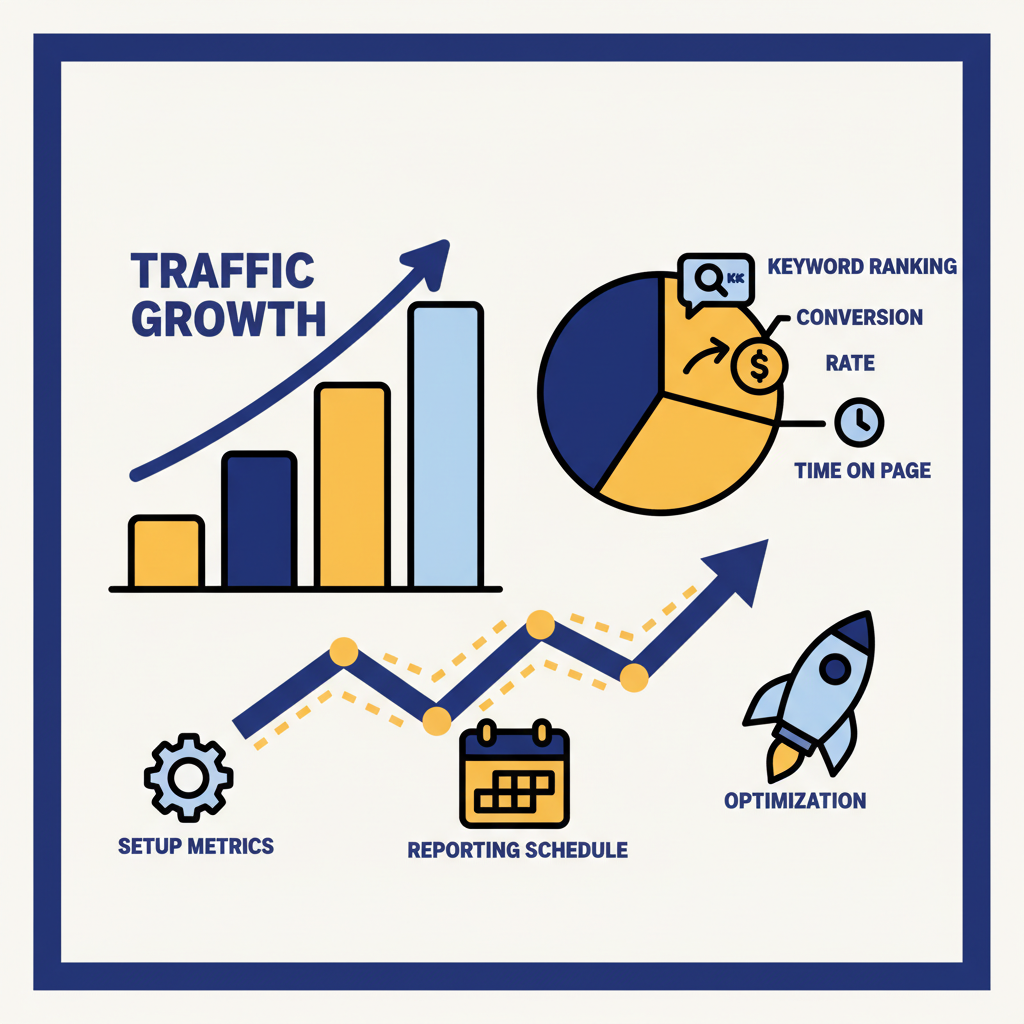What Makes an Organic Traffic Growth System Different?
Posted by
Related reading
What Does It Really Take to Build Sustainable Organic Traffic?
How to Skyrocket Your Organic Traffic in 90 Days: A Data-Driven Blueprint Struggling to grow your website's organic traffic? You're not alone. While paid advert...
Understanding the Fast SEO Methodology
How to Implement Fast SEO Strategies That Deliver Results in 30 Days In today's hyper-competitive digital landscape, waiting months for SEO results is no longer...
What is Organic Traffic and Why Should You Prioritize It?
Organic Traffic: Complete Guide for 2025 The digital landscape has shifted dramatically, and organic traffic remains the holy grail of sustainable online succes...
How to Build an Organic Traffic Growth System That Delivers Results

Building a sustainable organic traffic system requires more than just publishing content and hoping for the best. Successful website owners understand that organic traffic growth follows specific methodologies that can be systematically implemented and measured. In this comprehensive guide, you'll discover how to create a robust organic traffic growth system that generates consistent, long-term results for your website.
What Makes an Organic Traffic Growth System Different?

An organic traffic growth system differs fundamentally from random SEO tactics because it focuses on creating interconnected processes that compound over time. Unlike paid advertising that stops generating traffic the moment you stop paying, a well-designed organic traffic system continues delivering visitors months and years after implementation.
The foundation of any effective organic traffic system starts with understanding your audience's search behavior and creating content that matches their intent. This approach requires strategic planning rather than sporadic content creation. When you develop systematic processes for content creation, optimization, and measurement, you create predictable growth patterns that scale with your efforts.
Most websites fail to achieve consistent organic traffic growth because they treat SEO as a collection of isolated tactics rather than an integrated system. A systematic approach connects every piece of your organic traffic strategy, from initial keyword research and content planning to ongoing performance optimization.
How Do You Conduct a Strategic Content Audit for Organic Traffic?
Before building new organic traffic systems, you must understand your current performance baseline. A strategic content audit reveals which pages already generate organic traffic and identifies opportunities for improvement.
Start by analyzing your top-performing organic landing pages using Google Analytics and Google Search Console. Export data for the past 12 months to identify seasonal patterns and long-term trends. Look for pages that receive consistent organic traffic but have declining performance, as these represent quick optimization opportunities.
Next, evaluate your content gaps by comparing your current content against competitor analysis and search demand data. According to Ahrefs' research on content gaps, websites typically miss 60-80% of relevant keyword opportunities in their niche. This analysis forms the foundation of your organic traffic growth strategy.
What Data Points Matter Most for Organic Traffic Analysis?
| Metric | Purpose | Target Range |
|---|---|---|
| Organic Click-Through Rate | Measures title/meta effectiveness | 2-5% average |
| Average Session Duration | Indicates content quality | 2-4 minutes |
| Pages per Session | Shows content engagement | 2-3 pages |
| Bounce Rate | Reveals content relevance | 40-60% range |
| Conversion Rate | Measures business impact | 2-5% typical |
How Do You Build Content Clusters for Maximum Organic Traffic Impact?

Content clustering represents one of the most effective strategies for systematic organic traffic growth. This approach involves creating comprehensive topic coverage that establishes your website as an authoritative resource in specific subject areas.
Begin by identifying your primary topic areas based on business objectives and search volume data. Each cluster should center around a primary keyword with substantial search volume, supported by 8-15 related subtopics that address specific user questions and needs.
The cluster structure works because search engines increasingly favor websites that provide comprehensive coverage of topics rather than isolated pages targeting individual keywords. When you create detailed SEO-focused content that covers entire topic areas, you increase the likelihood of ranking for hundreds of related long-tail keywords.
How Should You Structure Individual Content Pieces?
Each piece of content within your cluster should serve a specific purpose in the user journey. Create pillar content that provides comprehensive overviews of main topics, then develop supporting content that addresses specific questions or use cases within that topic area.
Link strategically between cluster content using descriptive anchor text that helps both users and search engines understand content relationships. Internal linking within clusters can increase organic traffic by 25-40% according to studies from Moz's research on internal linking.
What Technical Foundation Supports Organic Traffic Growth?
Technical SEO creates the infrastructure that allows your content to perform optimally in search results. Without proper technical foundations, even excellent content struggles to achieve its organic traffic potential.
Page speed optimization directly impacts organic traffic performance. Google's Core Web Vitals now factor into ranking algorithms, making site speed a crucial component of organic traffic systems. Aim for loading times under 3 seconds on both desktop and mobile devices.
Mobile optimization has become non-negotiable for organic traffic success. With mobile searches accounting for over 60% of total search volume, your organic traffic system must prioritize mobile user experience. This includes responsive design, fast loading times, and intuitive mobile navigation.
Proper technical implementation also involves optimizing URL structures, implementing schema markup, and ensuring clean site architecture. These elements help search engines understand and categorize your content more effectively, leading to better organic visibility.
How Do You Measure and Optimize Organic Traffic Performance?

Systematic measurement separates successful organic traffic systems from random SEO efforts. Establish clear metrics and reporting schedules that track both leading and lagging indicators of organic traffic performance.
Set up automated reporting that tracks organic traffic trends, keyword ranking improvements, and conversion metrics. Weekly reviews of organic traffic data help identify emerging opportunities and potential issues before they impact overall performance. Monthly deep-dive analysis should examine content performance patterns and competitive landscape changes.
Beyond basic traffic metrics, focus on user engagement signals that indicate content quality and relevance. Time on page, scroll depth, and internal link clicks provide insights into how well your content serves user intent. High-quality organic traffic typically shows strong engagement metrics alongside conversion performance.
How Often Should You Review and Adjust Your Strategy?
Organic traffic systems require regular optimization to maintain performance. Plan quarterly strategy reviews that assess overall system performance and identify areas for improvement. These reviews should examine content performance, technical issues, and competitive changes that might affect your organic traffic growth.
Monthly tactical adjustments keep your system responsive to search algorithm updates and seasonal trends. This might involve updating existing content, adjusting internal linking strategies, or expanding successful content clusters based on performance data.
How Do You Scale Your Organic Traffic System?
Scaling organic traffic systems requires balancing content production with quality maintenance. As your content library grows, you need processes that ensure consistent quality while increasing publication frequency.
Develop content templates and style guides that maintain quality standards across increased content production. Implementing systematic approaches to content creation allows you to scale content production without sacrificing the quality that drives organic traffic growth.
Create content calendars that balance new content creation with existing content optimization. Updating and expanding existing high-performing content often generates more organic traffic than creating entirely new pieces. Plan to refresh your top 20% of organic landing pages every 6-12 months with updated information and expanded coverage.
Conclusion
Building an effective organic traffic growth system requires strategic planning, systematic implementation, and consistent optimization. By focusing on content clusters, technical foundations, and measurable processes, you create sustainable organic traffic growth that compounds over time.
The key to success lies in treating organic traffic generation as an integrated system rather than a collection of isolated tactics. When you implement these systematic approaches, you'll see more predictable and substantial organic traffic growth that supports your business objectives.
Ready to implement a systematic approach to organic traffic growth? Start with a comprehensive audit of your current content and technical performance, then build your content cluster strategy around your most promising organic traffic opportunities.